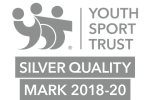Key Stage 5 Product Design
How will the subject be taught:
Design and technology is an inspiring, rigorous and practical subject. This specification encourages students to use creativity and imagination when applying an iterative design processes to develop and modify designs and to design and make prototypes that solve real world problems, considering their own and others’ needs, wants, aspirations and values.
Students will need to take every opportunity to integrate and apply their understanding and knowledge from other subject areas studied during key stage 4, with a particular focus on science and mathematics, and those subjects they are studying alongside GCE design and technology.
Coursework will be tailored to suit individual students’ strengths, backgrounds and personal interests. Students will be guided with their design briefs to ensure they can achieve to their potential. Students will be expected to work independently to produce their coursework. Theory for the exam will be taught in lessons and also undertaken by students outside of lesson time.
The majority of the work will be expected to be completed in a sketch book format which can then be used for university interviews as part of a student’s portfolio.
What is covered in the course:
Component 1:
Design and Technology in the 21st Century
Written examination 3 hours 50% of qualification
Students take a single examination in one of the following endorsed areas:
• Fashion and Textiles
• Product Design
The examination includes a mix of structured and extended writing questions assessing students' knowledge and understanding of:
• technical principles
• designing and making principles along with their ability to analyse and evaluate wider issues in design and technology.
Component 2:
Design and make project
Non-exam assessment approximately 80 hours 50% of qualification
A sustained design and make project, based on a brief developed by the candidate, assessing the candidate's ability to:
• identify, investigate and outline design possibilities
• design and make prototypes
• analyse and evaluate design decisions and outcomes, including for prototypes made by themselves and others The design and make project will be based within the same endorsed area as the written examination.
The subject content of both components covers the following:
• designing and innovation
• materials and components
• processes
• industrial and commercial practice
• product analysis and systems
• human responsibility
• public interaction
• marketing and research
What opportunities come with this subject:
Product Design can be tailored to meet the needs of the specific design route students want to specialise in. It enables them to become competent in a wide range of independent skills and creative development methods that can be adapted to suit other situations and employment. This is essential if a learner hopes to be successful in Higher Education. An A level in Product Design, combined with other subjects can be used to gain access to all university courses.
Higher Education/Career Implications:
Exhibition designer Furniture design/Manufacture
Industrial Designer Interior and spatial designer
Automotive engineer Advertising art director
Graphic designer Materials engineer
Product manager Production designer, theatre/television/film
For more information please speak to Ms Hayward, Lead Teacher on A Level Qualifications.
Purchasing manager Product Designer
Graphic Designer Architect
Footwear Designer Costume Designer
Fashion Designer Textile Designer
















